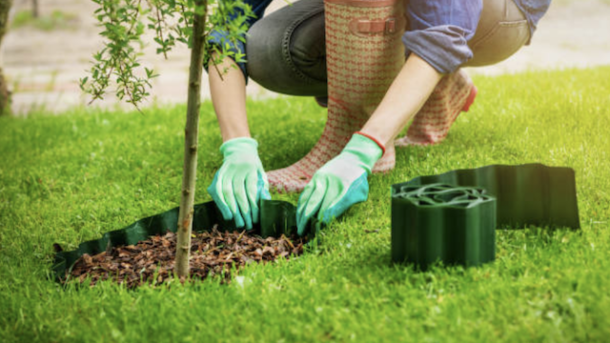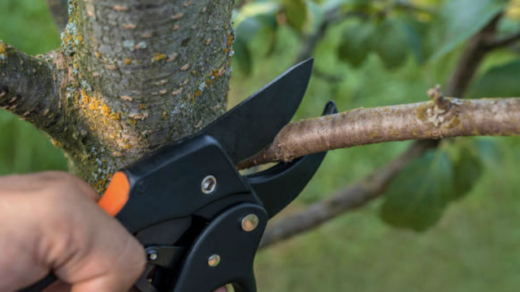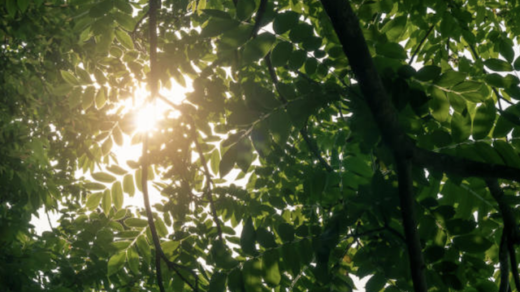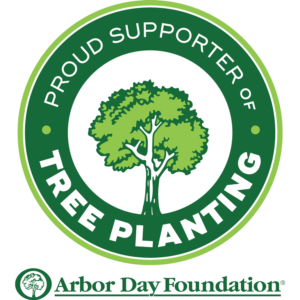Planting trees on your property has many benefits. Trees create summer shade, filter polluted air and increase curb appeal and property value.
Once full-grown, trees are very simple to care for: another benefit! They are hardy and tend to grow despite minimal care. But, if you want to ensure your trees reach their potential, they need more effort.
Lack of care for growing trees might lead to rotting, disease, under watering or pest problems.
The good news is that tree care isn’t too difficult, but you do need a little information to do it correctly. Research the new trees you plant in order to know what they need. Then care for them and watch them bloom.
Below, we’ll describe the five best practices on how to plant a new tree and seeing it thrive. You probably are aware of the basics, so let’s dive a little deeper and lay out how to complete each step correctly.
Tree Care Tips for New Trees
These five tips will not only help keep trees alive, they’ll help them to grow faster, resist extreme gusts of wind, fight off diseases and pests and create more leaves, flowers or fruit.
Water Your Tree
New trees need more water than older ones. The trees you plant on your land are no exception.
The root of the tree and the soil all around it should be kept moist, but don’t let it get too wet, as this can cause some of the roots to rot.
The best practice is 4-10 gallons of water each week. Rain water also counts, and although it’s difficult to have an exact reading, a rain gauge can help get you close enough to add the rest. Your trees need this much water every week for the initial 2-3 growing seasons.
Mulch Around Your Trees
Mulch is more than an attractive landscaping material. It actually helps protect new trees, especially the roots. But laying mulch the wrong way can result in rotting and decay – so much so, that it’s possible that the new tree will not survive.
Place mulch exactly 3 inches away from the tree trunk and spread it around to cover the ground under the longest horizontal branch. For new trees, this isn’t going to be very far, but as the tree grows, your mulch area will grow substantially.
Keep the mulch at least 2 to 4 inches thick in all areas around the tree. Be attentive in spreading it out consistently and far enough away from the tree trunk so it does not stop air flow around the trunk.
Fertilize Around Your Tree
Fertilizer provides the nutrients your land’s soil might not naturally have. Most new trees will benefit from fertilizing, but you have to use the right products and do it at the correct time in order for fertilizer to be most impactful.
The ideal season to fertilize is during early spring. Sometimes early summer also provides the right conditions (comfortable temperatures and moist soil), but don’t count on it.
If you are unsure about which fertilizer to use, speak to a tree care professional for advice. Slow-release fertilizers are usually a good idea because they feed trees over a period of time rather than all at once.
Follow through with these tasks in the first growing seasons after planting a new tree, and then reconsider your watering, mulching and fertilizing as the tree grows larger. As seasons go on, there will be additional tree care projects that are more important for new trees.
Prune Your Tree
Tree trimming is very important – but very challenging – in the first years after you plant a new tree. As the tree grows, you will see many little branches take off, competing to become the trunk of the tree. While you may think this shows that the tree is healthy and growing well, but it can actually lead to a weak tree in the future.
Early trimming helps to shape the tree into what it is going to look like when it gets much larger. As tiny limbs emerge on the lower trunk, they must be cut off so they don’t pull water and nutrients away from the branches at the top of the tree.
So long as you have trees on your property, they need to be trimmed periodically. When the trees get too large for you to trim them safely, you can count on WY Tree Trimming to do the job for you.
Monitor Your Tree
Young trees are at the highest risk for damage, disease and pest issues. But you’re never truly safe from these things. As your tree gets older, monitor it closely for evidence of disease or poor nutrition, including the following:
- Leaf color changing out of season, especially leaves turning brown or yellow
- Early leaf falling, despite whether these leaves look healthy or sick
- Withering, regardless of proper watering
- Individual limbs dying
- Bark peeling off
These signals indicate a health issue. It is likely going to require professional maintenance if your hope is to keep the tree alive. An arborist can typically diagnose the problem by simply looking at the tree, although they will perform testing whenever necessary.
If you identify the problem quick enough, you will probably be able to save the tree from dying. Being proactive is the best course of action to protect your new trees.
The steps above are simple yet effective. Don’t underestimate the importance of the basics! When your new trees have proper care, combined with sunshine and barring any severe, damaging weather, the chances are good that they will survive and will look beautiful!
Of course, you could already have a very busy schedule and don’t want to take on these additional lawn care projects. In some cases, homeowners don’t have the physical ability or the tools to give their growing trees the appropriate care.
No matter the situation, it’s ok to hire a tree service for the care of new trees. A certified arborist in Wyoming can consult with you about the best course of care for each type of tree you plant. They love sharing their expertise and skills with people planting new trees, and they can make the difference between trees that struggle and trees that thrive.
Call WY Tree Trimming now for information on routine tree care in Wyoming – including tree trimming – for newer trees and old trees. An arborists will determine the best plan for your trees! Locate your city in our service area here.






